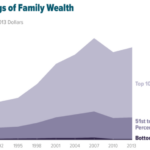Exploring the potential of AI to predict and avoid contrail formation
- Airlines are exploring the use of AI to reduce the environmental impact of contrails
- Contrails contribute to climate change and account for about 35% of aviation’s global-warming impact
- Researchers are working on predicting when and where contrails form to avoid their formation
- American Airlines, Google Research, and Bill Gates’s Breakthrough Energy conducted test flights using AI and satellite imagery
- Initial tests showed that planes successfully avoided making contrails when using the return routes set by the model
- Delta Air Lines is also developing an algorithm to detect and forecast contrails
- Addressing the issue of contrails can be as easy as adjusting the altitude of planes to avoid areas with high humidity
Airlines and researchers are turning to artificial intelligence (AI) to tackle the environmental impact of contrails. Contrails, which form when water vapor condenses around jet-engine pollutants, contribute to climate change. A report by the Intergovernmental Panel on Climate Change highlighted that clouds formed from contrails account for about 35% of aviation’s global-warming impact. To address this issue, airlines such as American Airlines and Delta Air Lines, along with tech companies like Google Research, are conducting test flights using AI and satellite imagery to predict when and where contrails form. By identifying contrail formation, airlines can plan routes that avoid these areas, reducing their environmental impact. Initial tests have shown promising results, with planes successfully avoiding contrail formation when using the routes set by the AI model. Delta Air Lines is also developing an algorithm to detect and forecast contrails, aiming to reduce their formation by about 80%. Additionally, adjusting the altitude of planes to avoid areas with high humidity can also help prevent contrail formation. However, widespread implementation of these measures would require collaboration among airlines and integration into current flight systems. The use of AI in addressing contrail formation shows potential for reducing the environmental impact of aviation.
Factuality Level: 3
Factuality Justification: The article provides relevant information about contrails, their impact on climate change, and ongoing efforts to predict and reduce their formation. However, it lacks depth and critical analysis, presenting the information in a somewhat sensationalized and repetitive manner. It also includes some opinions presented as facts, such as the effectiveness of the proposed solutions without sufficient evidence.
Noise Level: 3
Noise Justification: The article provides relevant information about the impact of contrails on climate change, ongoing research to predict and reduce contrail formation, and the potential solutions being explored by airlines and researchers. It stays on topic and supports its claims with examples and quotes from experts. However, there is some repetition of information and the article could benefit from more in-depth analysis of the long-term implications of these efforts.
Financial Relevance: No
Financial Markets Impacted: No
Presence Of Extreme Event: No
Nature Of Extreme Event: No
Impact Rating Of The Extreme Event: No
Rating Justification: The article does not pertain to financial topics and does not describe any extreme events. It focuses on the efforts of airlines, tech companies, and researchers to predict and reduce contrails’ environmental impact.
Public Companies: American Airlines (AAL), Delta Air Lines (DAL)
Private Companies: Google Research,Breakthrough Energy
Key People: Andrew Gettelman (Earth Scientist at Pacific Northwest National Laboratory), Dinesh Sanekommu (Product Manager on Contrails at Google Research), Jill Blickstein (Vice President of Sustainability at American Airlines), Steven Barrett (Director of the Laboratory for Aviation and the Environment at MIT), Marc Shapiro (Head of the Breakthrough Energy Contrails team)
Move Size: No market move size mentioned.
Sector: All
Direction: Down
Magnitude: Large
Affected Instruments: Stocks, Bonds, Commodities
 www.wsj.com
www.wsj.com 





